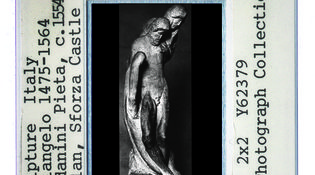 loading
loading
From the EditorVincent Scully, artistThe power of a lecture.  View full imageThere may have been a time when Yale didn’t have splendid lecturers, but it’s hard to imagine. The names flood in as soon as one starts thinking about it. For me, it’s Marie Borroff ’56PhD, John Morton Blum, Roger Ferlo ’79PhD, Richard Brodhead ’68, ’72PhD, Mary Miller ’81PhD, Marvin Chun, and that’s only the start. Many teachers at Yale have had extraordinary power to reshape their students’ impressions of the world, in 60 minutes or less. Vincent J. Scully Jr. ’40, ’49PhD, Sterling Professor Emeritus of the Arts, who died on November 30, may have been the best of them. He was also one of the most prolific. Scully started lecturing on art and architecture in 1947 and didn’t stop until 2009: six decades’ worth of lectures. They were, he said, his art. But Scully never allowed Yale to film his lectures. He of all people understood the intense relationship of observer to observed, and he must have decided that a camera would weaken the bond. It’s our loss. If you didn’t have the chance to hear him, your best fallback is to read our profile of Scully by Richard Conniff ’73, “The Patriarch” (March/April 2008). It’s full of Scully’s conversation, with his unique phrasing. He was incapable of cliché. For instance: “Works of art stay the same, but meanings drain in and out of them according to the experience of a generation.” Or his description of waiting on table in Commons, a scholarship student serving wealthy prep-school grads:
Conniff’s profile also includes several quotations from lectures Scully gave that year. He had the penchant of the great critic for divining meanings that would seem far-fetched if they weren’t so compellingly stated. Scully saw Michelangelo’s Laurentian Library, in Florence, as a metaphor for the hard labor of research. The scholar enters via a stairway that was like “an escalator coming down against you”; faces huge, threatening pilasters; and then, when the work is finally done, exits triumphantly through the imposing doorway. “I do think, exaggerated as it sounds,” he said, “the life of the mind, its victories, are really embodied here, the terror of it, the hardness of it, and the glory of it at the end.” I never took a Scully course as an undergrad, but I attended several of his lectures after I came back to campus as an editor. In late 2007, which saw Scully’s next-to-last semester of History of Art 112a, I heard him describe Michelangelo’s last sculpture. (Conniff renders it movingly.) The statue, a Pietà, looks shockingly clumsy for a Michelangelo—until you learn that he worked on it in the final two years of his life, when he was nearly 90 and had lost much of his skill. Scully was 87; this Pietà was the finale for his last class of the year. The room was silent as he fluently imagined Michelangelo’s desperate attempts to keep producing art to the end. “Everything about it has to do with death,” he said. But he found in the arcing shape of the work a redemptive allusion to the circle of life, summoning an image of “one great neoplatonic circle in the sky.” Scully was examining death, critiquing it, and uncovering, as he always did, a depth of meaning and a new angle of illumination. In pace requiescat.
[This article has been amended to correct an error regarding the Laurentian Library.]
The comment period has expired.
|
|